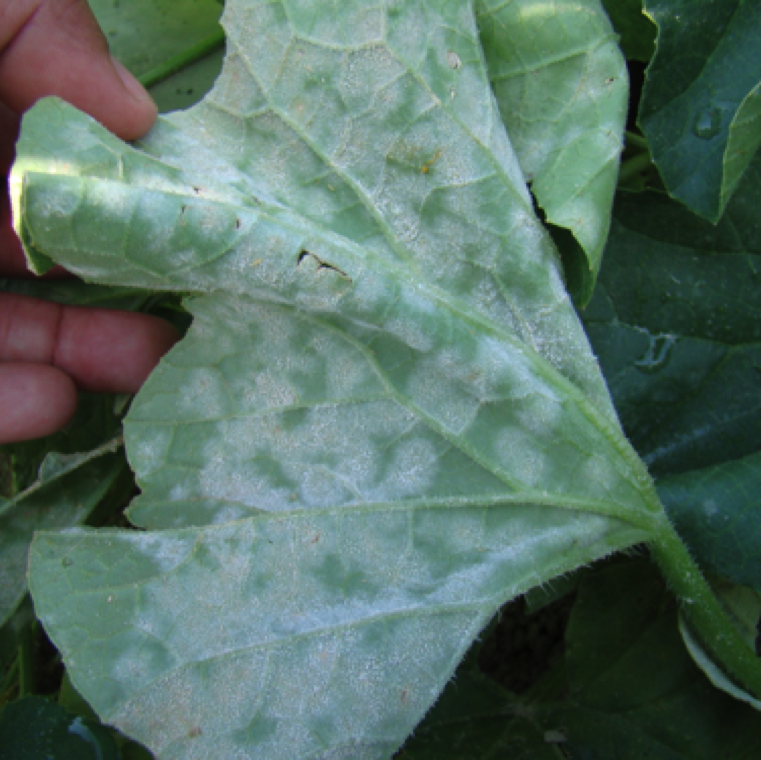By Clint Thompson

Powdery mildew is a disease all cucurbit farmers need to be familiar with this spring season. Unlike other pathogens that need wet, rainy conditions to flourish, powdery mildew prefers a drier environment.

If weather conditions turn dry this spring, powdery mildew could be most concerning, says Ed Sikora, professor and Extension plant pathologist in the Department of Entomology and Plant Pathology at Auburn University.
“Powdery mildew is a disease I think most people have seen. It impacts a number of different crops and hits all cucurbits. They’re all susceptible, but it’s more commonly found on cucumbers, squash, both yellow and winter squash and on pumpkins,” Sikora said. “The fungal pathogen overwinters on weeds. Often times, it’s just around your garden or field and then moves in on wind currents. It can move fairly long distances from a neighbor’s yard or a neighbor’s field.”
Powdery mildew prefers conditions where there is high humidity and abundant plant growth.
“If you over fertilize with nitrogen, where you have an abundant growth, that will favor development of powdery mildew,” Sikora said.
He said the disease will start at the center of the plant and move out. The leaves stay but as a brown source of inoculum. There is less photosynthetic area which exposes the fruit to sunscald. There is a potential for fewer fruit than growers desire.
“Powdery mildew doesn’t go to the fruit directly, but it will go to the handles. It’s a problem for pumpkin growers, because it will hit the handle and weaken it. When you go to pick them or when a school bus of children goes out to a U-pick operation and they grab that handle, it falls off and the pumpkin loses value quickly,” Sikora said.
He recommends growers use a tolerant or resistant variety, though, it may have to be supplemented with a fungicide especially when conditions favor mildew development.









